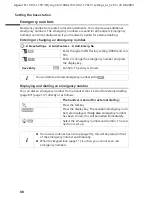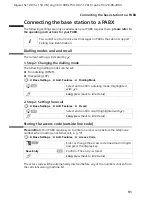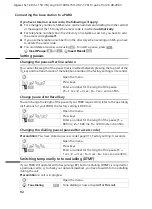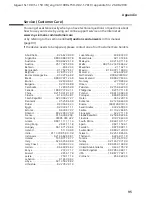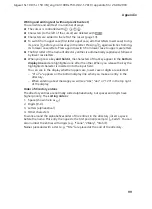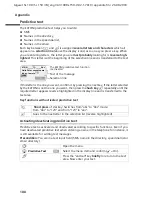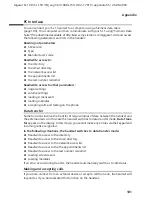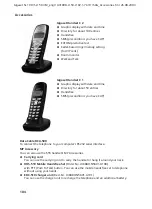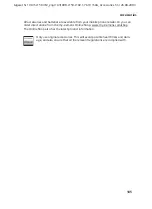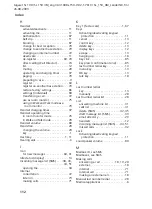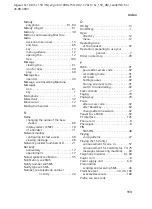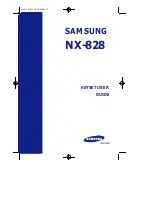
99
Appendix
Gigaset SL 100 / SL 150 / IM_engl / A31008-L150-J102-1-7619 / appendix.fm / 26.08.2003
Writing and editing text (without predictive text)
You can write and edit text in a number of ways:
◆
The cursor is controlled with
u v t s
.
◆
Characters (to the left of the cursor) are deleted with
.
◆
Characters are added to the left of the cursor (page 13).
◆
To switch from upper case (first letter upper case, all other letters lower case) to dig-
its, press
P
before you press key in the letter. Pressing
P
again switches from dig-
its to lower case letters. Press again to switch from lower case to upper case letters.
◆
The first letter of the name of directory entries is automatically capitalised, followed
by lower case letters.
◆
When you press a key
and hold it
, the characters of that key appear in the
bottom
display line
and are highlighted one after the other. When you release the key the
highlighted character is inserted into the input field.
You can see in the display whether upper case, lower case or digits are selected:
– "A" or "a" appears on the bottom display line when you make an entry in the
directory.
– When entering a text message you will see "Abc", "abc" or "123" in the top right
of the display.
Order of directory entries
The directory entries are normally sorted alphabetically, but spaces and digits have
higher priority. The
sorting order
is:
1. Space (shown here as
s
)
2. Digits (0–9)
3. Letters (alphabetical)
4. Other characters
To work around the alphabetical order of the entries in the directory, insert a space
before the name. This entry then goes to the first position (example: "
s
Carla"). You can
also number the entries with digits (e.g. "1Jane", "2Mary", "3John").
Names preceded with a star (e.g. "*Ute") are placed at the end of the directory.
f
C




